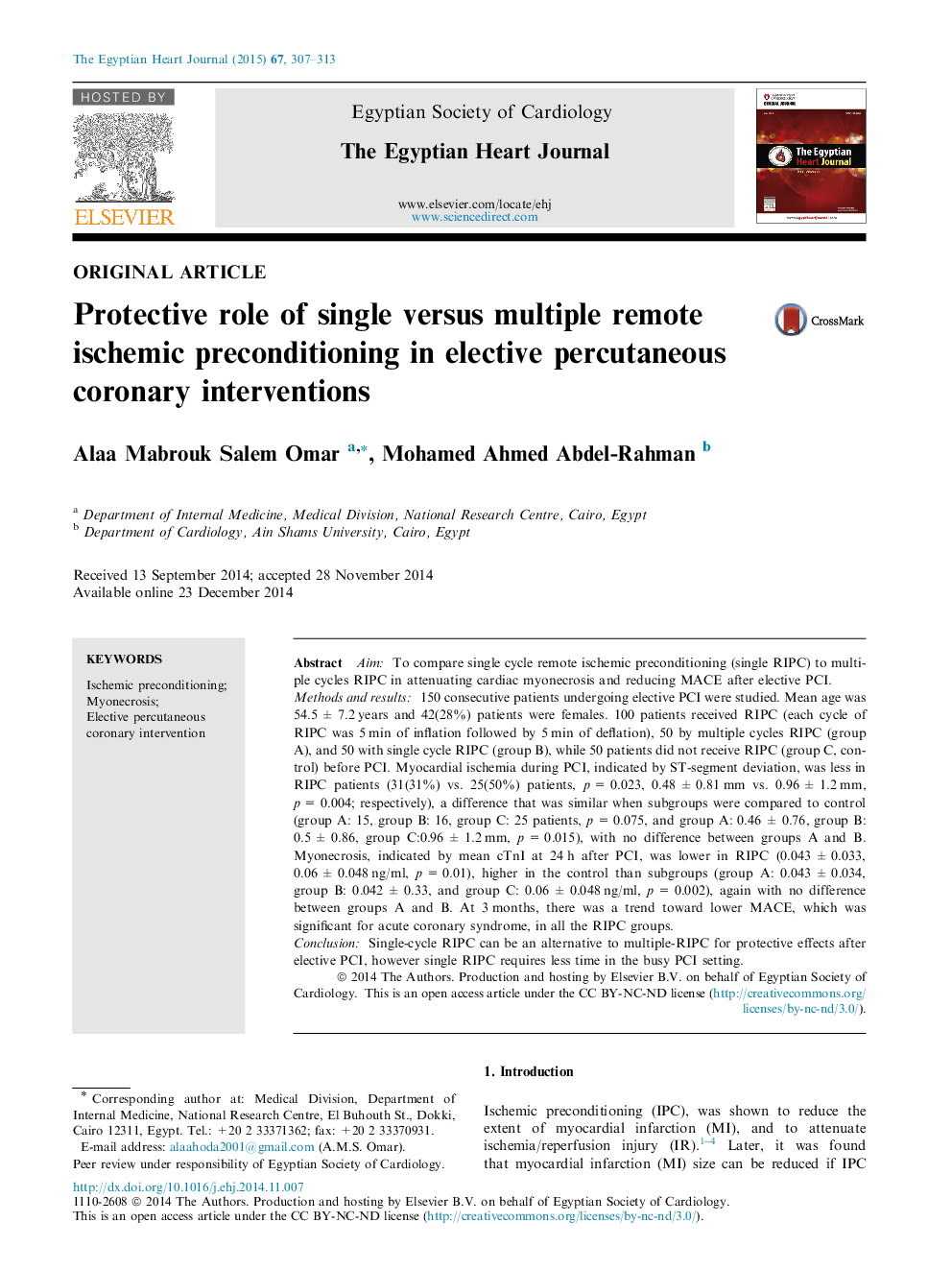| Article ID | Journal | Published Year | Pages | File Type |
|---|---|---|---|---|
| 2910504 | The Egyptian Heart Journal | 2015 | 7 Pages |
AimTo compare single cycle remote ischemic preconditioning (single RIPC) to multiple cycles RIPC in attenuating cardiac myonecrosis and reducing MACE after elective PCI.Methods and results150 consecutive patients undergoing elective PCI were studied. Mean age was 54.5 ± 7.2 years and 42(28%) patients were females. 100 patients received RIPC (each cycle of RIPC was 5 min of inflation followed by 5 min of deflation), 50 by multiple cycles RIPC (group A), and 50 with single cycle RIPC (group B), while 50 patients did not receive RIPC (group C, control) before PCI. Myocardial ischemia during PCI, indicated by ST-segment deviation, was less in RIPC patients (31(31%) vs. 25(50%) patients, p = 0.023, 0.48 ± 0.81 mm vs. 0.96 ± 1.2 mm, p = 0.004; respectively), a difference that was similar when subgroups were compared to control (group A: 15, group B: 16, group C: 25 patients, p = 0.075, and group A: 0.46 ± 0.76, group B: 0.5 ± 0.86, group C:0.96 ± 1.2 mm, p = 0.015), with no difference between groups A and B. Myonecrosis, indicated by mean cTnI at 24 h after PCI, was lower in RIPC (0.043 ± 0.033, 0.06 ± 0.048 ng/ml, p = 0.01), higher in the control than subgroups (group A: 0.043 ± 0.034, group B: 0.042 ± 0.33, and group C: 0.06 ± 0.048 ng/ml, p = 0.002), again with no difference between groups A and B. At 3 months, there was a trend toward lower MACE, which was significant for acute coronary syndrome, in all the RIPC groups.ConclusionSingle-cycle RIPC can be an alternative to multiple-RIPC for protective effects after elective PCI, however single RIPC requires less time in the busy PCI setting.
